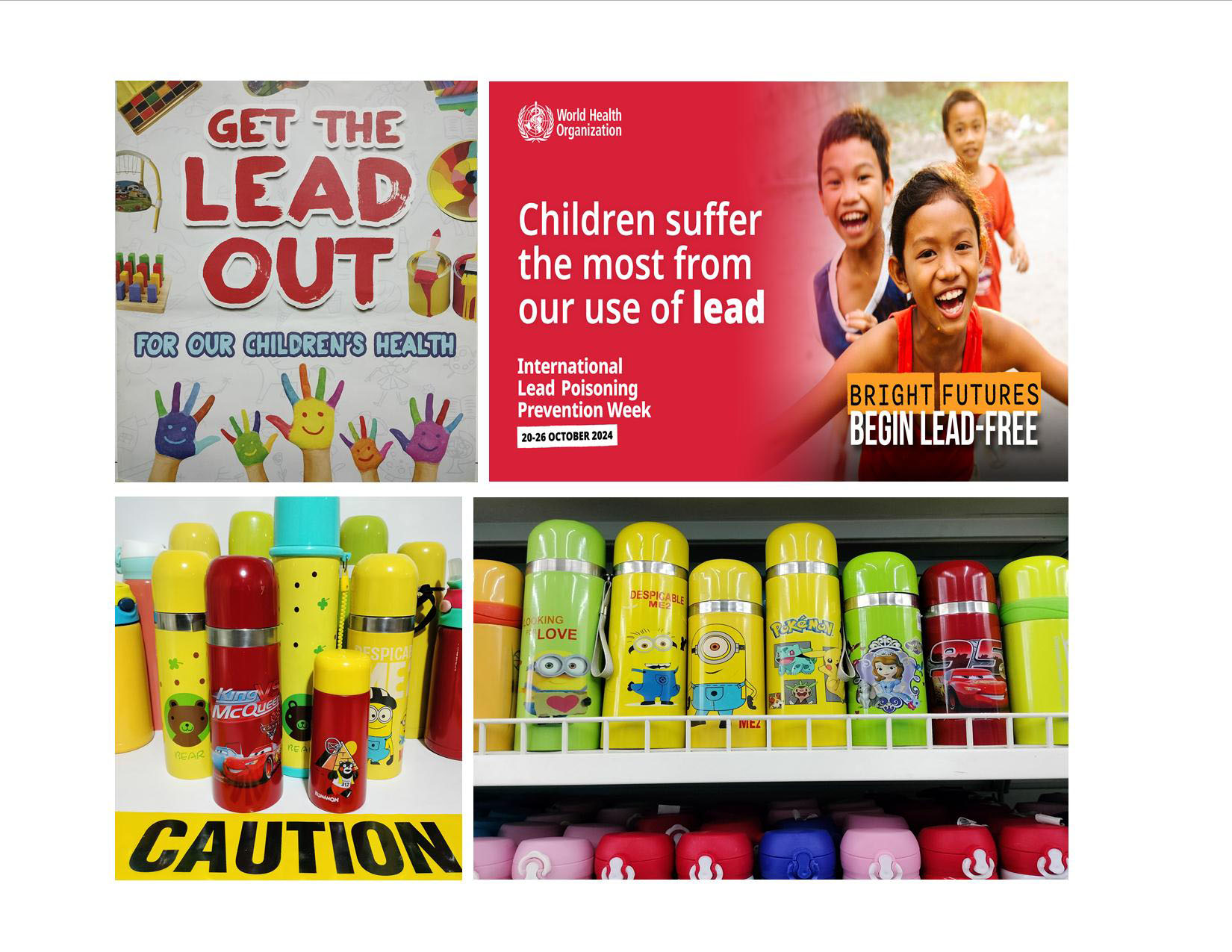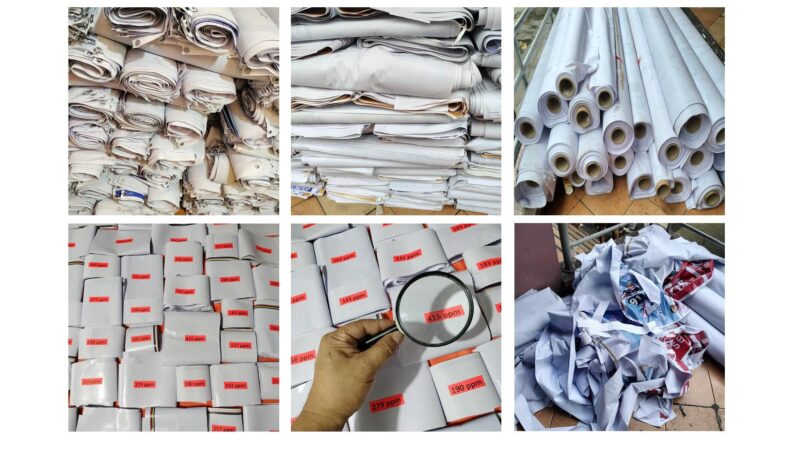EcoWaste Coalition Finds More Painted Tumblers with High Lead Content

16 October 2024, Quezon City. As the International Lead Poisoning Prevention Week (ILPPW) nears, the EcoWaste Coalition reiterated its plea for action to rid the market of reusable stainless steel water tumblers that pose lead paint exposure risks.
The group repeated its appeal for regulatory action after purchasing additional reusable water containers and finding them positive for lead above the 90 parts per million (ppm) limit for lead in paints and surface coatings.
“The proliferation of water tumblers coated with lead-containing paints need to stop,” said Aileen Lucero, National Coordinator, EcoWaste Coalition. “While reusable tumblers are a great substitute to the ubiquitous single-use bottles and cups, these eco-friendly alternatives must be safe from hazardous materials like lead in paint, which can chip over time with repeated use and which may end up being ingested by the user who is not aware of the health risk.”
“Deteriorating lead paint on the walls, windows, doors, furniture items, appliances, gates, playground equipment, toys and even reusable tumblers can be a source of exposure to lead,” Lucero added.
Out of 15 items purchased last October 13, five were found decorated with red or yellow paints laden with lead ranging from 2,610 ppm to 40,740 ppm. The group used a handheld X-Ray Fluorescence (XRF) analyzer to screen the samples for toxic metals like lead.
The items were bought for P59 to P299 each from retail stores in Dasmariñas and Imus Cities, and from the Municipality of Silang, Cavite Province.
Here’s what the EcoWaste Coalition found:
1. The red paint on a cute kid’s tumbler only five inches in height and with a Kumamon character has 2,610 ppm lead.
2. The red paint on a tumbler with King vs. McQueen car design has 7,010 ppm lead.
3. The yellow paint on a tumbler with Minion characters has 28,890 ppm lead.
4. The yellow paint on a tall tumbler with a blue green plastic lid and a bear design has 30,300 ppm lead.
5. The yellow paint on a tumbler with a yellow metallic lid and a bear design has 40,740 ppm lead.
To uphold the country’s ban on lead-containing paints and protect consumers, children in particular, from lead paint (a highly preventable source of lead exposure), the EcoWaste Coalition put forward the following action points:
1. For the national government to name the regulatory agency in charge of enforcing the lead paint ban in consumer products such as water tumblers, including the removal from the market of non-compliant ones.
2. For importers to only bring in products with authentic certificates of conformity to the 90 ppm total lead limit for paints, and for retailers, including online sellers, to demand for such certificates from suppliers before putting any painted water tumblers on sale.
3. For consumers to insist on their right to product labeling information, as well as their right to quality and non-hazardous products.
The ILPPW, now in its 12th year, aims to draw attention to the health impacts of lead exposure, highlight the efforts by countries and partners to prevent childhood lead exposure, and accelerate action to phase out the use of lead in paint.
For this year, the campaign focus is “Bright Futures begin Lead Free” to remind the society, particularly governments, industries, civil society groups, and others of the unacceptable risks of lead exposure and the need for action to safeguard children’s health.
As pointed out by the World Health Organization (WHO), “young children are particularly vulnerable to the toxic effects of lead and can suffer permanent adverse health impacts, particularly on the development of the central nervous system.”
“Lead causes long-term harm in adults, including increased risk of high blood pressure, cardiovascular problems and kidney damage,” warned the WHO, adding “lead exposure during pregnancy can cause reduced fetal growth and preterm birth.”
Reference:
https://www.who.int/campaigns/international-lead-poisoning-prevention-week







